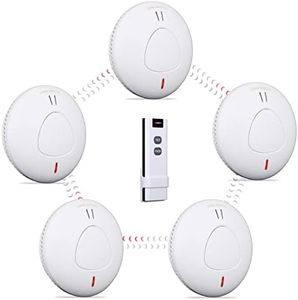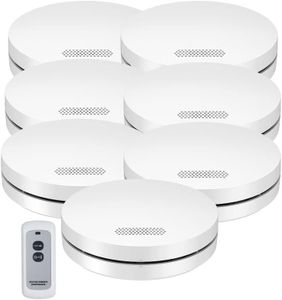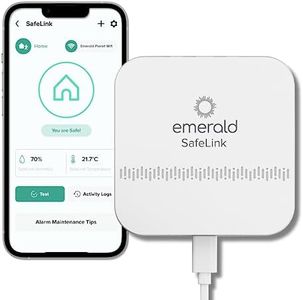We Use CookiesWe use cookies to enhance the security, performance,
functionality and for analytical and promotional activities. By continuing to browse this site you
are agreeing to our privacy policy
9 Best Smart Smoke Alarm
From leading brands and best sellers available on the web.Buying Guide for the Best Smart Smoke Alarm
Selecting the right smart smoke alarm can greatly increase your home's safety and provide you with peace of mind through enhanced alerts and connectivity. Modern smart smoke alarms do more than just sound an alarm—they can send notifications to your phone, connect with other smart devices in your home, and offer easy maintenance reminders. Understanding key features and how they relate to your living situation will help you choose the best fit for your needs.Detection TechnologyDetection technology refers to the method the smoke alarm uses to sense fire or smoke, with photoelectric and ionization being the most common types. Photoelectric sensors are generally better at detecting smoldering, smoky fires, while ionization sensors are typically faster at sensing quick, flaming fires. Many devices now combine both to cover more scenarios. Your choice should depend on your environment: for kitchens or areas prone to smoke from cooking, photoelectric is often preferred for fewer false alarms, while combination or dual-sensor types offer broader protection for multi-room homes.
Smart ConnectivitySmart connectivity is the ability of the smoke alarm to link with your phone or other smart devices via Wi-Fi or Bluetooth. This feature can alert you on your smartphone if there's an emergency when you're not home. Connectivity options can include app notifications, compatibility with voice assistants, and integration with smart home systems. For households where people travel often or have other connected devices, choosing an alarm with strong smart integration provides maximum control and awareness.
Power SourceThe power source is how a smoke alarm stays operational, commonly either battery-powered or hardwired into your home's electrical system, often with battery backup. Battery-powered alarms are easy to install and ideal for renters, but require regular battery replacements, while hardwired alarms offer more permanence and usually interconnect with other alarms for whole-house alerts. Your home setup and willingness to maintain batteries vs. installing a hardwired system will determine which is best for you.
InterconnectivityInterconnectivity means that if one alarm detects smoke or fire, all connected alarms will sound. This feature is important for larger homes or those with multiple floors, ensuring everyone is alerted no matter where the fire starts. Alarms may interconnect wirelessly or via hardwired links. Consider your home's layout: families or multi-room homes benefit most from interconnectivity to increase total household safety.
Maintenance Alerts and Self-TestingThese features help keep your smoke alarm functioning optimally by notifying you when maintenance is needed, such as battery replacement or sensor cleaning, and performing automatic self-tests to confirm the system is working. This reduces the risk of a non-functional alarm due to neglect. For busy individuals or those who may forget regular checks, an alarm with proactive reminders and self-testing features ensures continuous protection.
Silencing and Sensitivity SettingsSome smart smoke alarms allow you to temporarily silence nuisance alarms (like burning toast) directly from your phone or a physical button and may let you adjust their sensitivity. This prevents frustration and the temptation to disable the alarm. If you have a kitchen near your alarm or frequent false alarms, look for models with easy silencing and customizable sensitivity to better fit your lifestyle.










